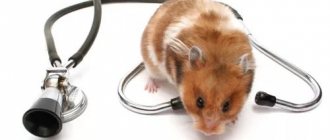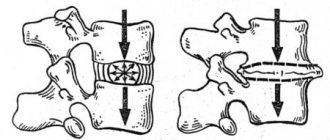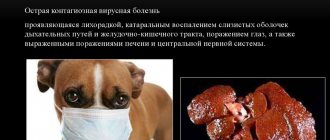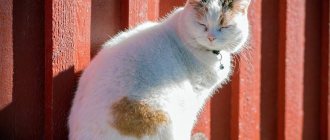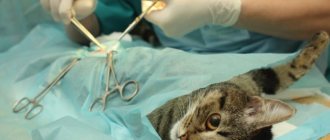Djungarian hamsters are domestic miniature, decorative rodents. Djungaric hamsters live from 1 to 4 years. Four years of age is considered a rarity among hamsters; such rodents are considered long-lived
.
Djungarians do not like being in sunlight for a long time
; they are negatively affected by loud sound and bright fast clips on television.
Diseases of Djungarian hamsters depend on the conditions of detention. Hamsters require a spacious cage
, since the animals themselves are active animals, and they also do not tolerate the accumulation of garbage and excrement in their habitat.
proper nutrition has a great influence on hamsters . In this way, you can achieve a healthy life expectancy for the animal. Long-term research has revealed that their diet must include vegetables and fruits, namely carrots and zucchini. It is these two food products that contain the very elements that have a positive effect on the digestive system of Djungarian hamsters.
What do hamsters, “jungarians” and their Syrian brothers get sick with?
The most common ailments for domestic rodents are mechanical injuries (dislocations, fractures, bruises), metabolic disorders and disorders of the digestive system associated with a violation of the animal’s diet.
Hamsters can get sick from both infectious (viral, bacterial and parasitic) and diseases not associated with an infectious agent. Including oncological pathologies. Hamsters may have helminths and intracellular parasites, lice, fleas, ticks, and skin fungus, but most likely you will not have to encounter these diseases if you follow the rules and regulations for caring for animals.
The most common pathologies in hamsters
The most common ailments for domestic rodents are:
- mechanical injuries (dislocations, fractures, bruises), including those received by an animal from squeezing a loving owner;
- metabolic disorders (obesity);
- disorders of the gastrointestinal tract associated with violation of the animal’s diet;
- abscesses on the paws;
- respiratory ailments of a viral and bacterial nature caused by a weakening of the general resistance of the animal’s body (hypothermia, drafts, vitamin deficiency);
- eye diseases (conjunctivitis: traumatic, allergic, associated with respiratory infection);
- diseases of the oral cavity and teeth (anomalies, excessive growth of teeth, inflammation of the cheek pouch).
With careful attention to your pet and good care for it, most diseases can be avoided.
Diseases dangerous to humans
Diseases that can be dangerous or potentially dangerous to humans are classified as infectious.
A person can become infected:
- rabies (the risk that a domestic hamster will be bitten by an infected predator is minimal);
- tularemia;
- salmonellosis;
- lymphocytic choriomeningitis (in most cases, people are asymptomatic);
- campylobacteriosis;
- helminthiasis called hymenolepiasis (only one type of helminth is dangerous for people - the dwarf tapeworm);
- dermatomycosis;
- tuberculosis;
- plague;
- leptospirosis and some others.
If you purchase an animal from well-established breeders and follow all animal hygiene measures, the risk of developing any of the listed diseases in a pet kept in an apartment is not very high.
Symptoms and signs of diseases of hamsters - regular, Djungarian, Syrian
The hamster is losing a lot of weight, he is lethargic and refuses to play. Moves slowly, sometimes staggering and with difficulty. Refuses food, sometimes drinks, or drinks a lot. Sits hunched over, eyes half closed. The coat looks disheveled, greasy, or falls out in clumps, forming tangles.
The owner may also notice:
- unpleasant odor from the pet;
- bowel dysfunction (constipation/diarrhea);
- various elements of a rash appear on the skin (from blisters to crusts);
- the hamster's eyelids stick together or the eyes lose their shine and transparency, become cloudy with a whitish veil, and protrude;
- the animal is limping;
- breathing heavily, coughing or sneezing;
- there is discharge of mucus, pus or serous and bloody discharge from the eyes, mouth, genitals;
- torticollis;
- constant itching;
- wet fur near the anus or around the muzzle;
- cheek pouches fall out;
- The animal is losing a lot of weight or gaining weight.
Any of these signs is a reason to contact a veterinarian. Some owners are embarrassed to come to the veterinary clinic with their animals. If your pet’s life is precious, you should definitely take him to a veterinarian.
Prevention
To prevent the disease from having to be treated, the owner should think about preventive measures. Simple prevention will help you avoid the disease.
There are several rules that all hamster owners need to know:
- buy animals only from official nurseries and require documents confirming that the rodents are healthy;
- choose food after talking with a veterinarian, check the composition of the diet in accordance with the doctor’s recommendations;
- Do not give your hamster food supplements unless necessary;
- “human” food is strictly prohibited (for example, sausages, cheese, sausage, crackers with spices);
- clean the cage daily, wash all objects the pet comes into contact with with antiseptic agents every 14 days;
- do not handle the animal with dirty hands, adhere to personal hygiene when dealing with a rodent.
Wet tail disease can be easily cured if you pay attention to the symptoms promptly. The owner should note warning signs and take the animal to a veterinarian
It is not recommended to resort to self-medication, since only a doctor will write recommendations regarding medications and dosage. You also cannot ignore the disease - it can be fatal.
Oral and dental diseases
Dental problems
Hamsters experience constant growth of their incisors. If an animal does not have enough objects on which to grind its teeth, it must suffer from excessive growth. This is manifested by hypersalivation, refusal of food, and weight loss of the pet.
Pathologies of the cheek pouches
Owners encounter this disorder in hamsters quite often.
The most common problems are:
- prolapse/prolapse;
- injuries;
- abscesses;
- neoplasms.
Signs of the disease are the appearance of pink tissue in the corner of the hamster's mouth due to prolapse. In case of injuries and abscesses, the hamster's eyes become very watery. At the initial stage of tumor formation, the animal may not have any symptoms. The cause of their appearance is unknown; treatment is surgical.
Cold
The first thing you need to know is that hamsters are very afraid of drafts and cold. It is not allowed to place the cage in a place where the air conditioner is directed or very close to a window. You should not take your hamster outside even in warm weather. A slight breeze is dangerous for a pet that is not accustomed to sudden changes in temperature. If the background temperature of the room where the pet is located has dropped sharply, you should think about heating the hamster. A cold is a rather dangerous disease for a hamster, and it should be treated immediately when the first symptoms appear, otherwise complications can lead to the death of the animal.
A hamster should never be bathed in water, otherwise it can easily catch a cold. Hamsters clean their fur in special sand, not in water. Large open drinking bowls are also dangerous for hamsters, as they can cause the hamster to get wet and get sick. It is advisable to provide hamsters with ball or nipple drinkers.
A hamster can get the flu from a person. During illness, it is advisable to reduce contact with the animal to a minimum.
The main symptoms of hamster disease:
- discharge from the nose and eyes;
- the hamster often sneezes and rubs its nose with its paw;
- the animal is breathing heavily.
If your hamster shows signs of a cold, you need to urgently take care of its temperature. The optimal temperature is 21-25 degrees. It is worth temporarily removing the wheel from the cage and providing your pet with absolute peace. It is necessary to show the hamster to a veterinarian and provide him with proper treatment.
Sneezing can be a sign not only of a cold, but also of an allergy. The strongest allergen is pine sawdust, which owners often unknowingly put in the cage as filler. This should not be done under any circumstances! Even if it initially seems that pine needles have no effect on your pet’s health, it is worth knowing that the harm of the allergen tends to accumulate. As a result of exposure to pine needles, the hamster's hair may fall out, and serious problems will begin with the respiratory tract.
Eye diseases
Conjunctivitis
Most often, owners encounter conjunctivitis in pet hamsters. It can be triggered by an infectious disease (salmonellosis, pseudotuberculosis, infectious pneumonia), injuries, debris and allergies.
In this case, the hamster squints the affected eye, its eyelids swell, photophobia develops, and the mucous lining is inflamed. The eyes become watery and a purulent secretion is released. If left untreated, the inflammatory process can also affect the cornea of the eye.
Cataract
Cloudiness of the lens in hamsters can be congenital, diabetic, or traumatic. Visually, the clouding is noticeable through the pupil, in the form of a whitish spot. In this case, the animal moves uncertainly, due to decreased vision or its complete loss.
School age
Growing up, the Aspie child gradually grasps the meaning of children’s communication with each other and also strives to join this game. However, his social immaturity becomes an obstacle on this path. Therefore, the child establishes communication connections through imitation of the behavior of other children. And some people do it quite skillfully. And if the person being imitated is simply an object to be imitated, then everything turns out quite well.
The problem arises when the Aspie teen has a tendency to imitate the behavior of the “bad boy.”
Over time, children with Asperger's may not only improve their social skills, but also acquire negative characteristics. One of them is psychological defense in the form of anger or arrogance, which can subsequently develop into physical aggression. This reaction occurs in response to the persecution and bullying that some children with the syndrome are subjected to due to their atypical behavior.
In general, at an older age, such children manage to establish sincere, friendly relationships with their peers. But, given their categorical attitude towards friendship, the choice of comrades is subject to careful selection.
Diseases of the gastrointestinal tract of hamsters
In these animals, pathologies of the digestive system occur with diarrhea or constipation, strong rumbling along the intestines, bloating and pain. In this case, the stool is not only liquid, but also with an unpleasant odor, and may contain an admixture of blood, mucus, or undigested lumps of mucus.
Improper feeding
Most often, hamsters suffer from non-infectious enteritis associated with poor diet, most often with a lack of hay. In this case, animals may experience constipation, diarrhea, flatulence, loss of appetite and lethargy.
Stress
Stool upset in hamsters can be caused by severe stress. There is no need to pick up the animal, just let it calm down. This condition does not require treatment.
Salmonellosis
An infectious disease of a bacterial nature, manifested by loss of desire to eat and severe diarrhea.
Hamster feces are slimy, foamy, and sticky. It acquires a yellow and green color and a very unpleasant odor.
The animal sits huddled in a corner and practically does not move.
His eyes turn sour (conjunctivitis begins), his stomach swells from gases and his spleen enlarges. The temperature rises sharply and then drops below normal levels. The animal dies within a week.
Colibacillosis (escherichiosis)
The hamster practically does not move, is apathetic, has no appetite, and weakness of the lower extremities is noticeable. The animal is suffering from diarrhea. The stools are liquid with a very unpleasant odor, light yellow, sometimes mixed with blood. The animal usually dies.
Wet tail
An infectious disease, the main symptom of which is watery diarrhea and constantly wet hair around the anus. Then the hamster becomes irritable, refuses food, and begins to bleed rectally. You need to give the animal water with electrolyte solutions and be sure to show the hamster to a doctor.
Poisoning
Signs of poisoning depend on what substance the animal sniffed, licked or swallowed. And from its quantity. This may include vomiting and diarrhea, loss of appetite and thirst, lethargy, and coordination disorders.
Coccidiosis
A parasitic disease, when the body’s defenses are weakened, active reproduction of coccidia (intracellular parasites) begins, leading to enteritis. The disease is characterized by bloody diarrhea and exhaustion of the animal. The hamster dies in most cases.
Parasitic, fungal, dermatological
Regardless of breed characteristics, hamsters are susceptible to fungal and parasitic diseases. Djungarians are often diagnosed with lichen, trichomoniasis and dermatophytosis. Animals are often attacked by worms. As a result of the development of such diseases, pets experience severe itching, restlessness and deterioration of the coat. Scratches, wounds and rashes form on the body.
Hamsters are susceptible to parasitic diseases.
With dermatophytosis, the skin becomes yellowish and begins to peel off. In the absence of effective treatment, pathogenic microorganisms penetrate into the lesions, provoking the development of inflammation in the structures of the dermis.
In addition, hamsters are vulnerable to dermatitis, dermatosis and allergic reactions. With a deficiency of vitamins and minerals, the condition of the coat worsens, and the protective functions of the immune system are reduced.
Diseases of the skin, fur and claws
Alopecia
There are many reasons for hair loss that is not associated with seasonal shedding in animals.
Usually this:
- stress;
- lack of nutrients;
- inflammatory diseases of the gastrointestinal tract;
- parasitic and fungal infections.
For any reason of illness, the animal needs to ensure a quiet existence, harmonize and fortify the diet.
In case of ringworm or parasitic infections, specific treatment is required.
Dermatomycoses
Most often these are microsporia and trichophytosis. With fungal infection of the skin and fur, the animal not only loses its hair, the hairs look broken at the root, sores and crusts appear on the skin. The animal is bothered by severe itching.
Dermatitis
Hamsters can have an allergic reaction, for example, to bedding. It is manifested by skin itching, tissue hyperemia, the appearance of various elements of the rash, and scratching.
Parasites
Helminthiasis can lead to deterioration in wool quality. Parasitism of lice and fleas leads to skin itching, tissue damage, and the formation of tangles.
Mouse pox
This disease is more common in rats and mice, but sometimes hamsters are also infected. In the acute course of the disease, the animal dies with minimal symptoms. With a less pronounced process, the hamster’s paw swells, closer to the sole, and blisters form on the skin. The paw hurts greatly, the process ends with gangrene and loss of the limb.
Folk remedies
You need to approach their use with caution - some herbs can be harmful if the tincture or decoction is not prepared correctly. The same applies to dosage.
Traditionally, decoctions and baths of chamomile (especially for itching), calendula, and peppermint are considered useful. Rosehip decoction taken orally helps well - it is rich in vitamins that activate the fight against allergies.
For severe itching, baths with nettle or celandine help well, however, these herbs should be collected in the spring; at other times of the year they contain relatively harmful substances.
Respiratory diseases
Trichomoniasis
This is an infectious disease characterized by the formation of yellow plaque and swelling of the pharynx, respiratory failure and laryngospasm. This condition leads to difficulty both breathing and eating. The hamster is losing weight and may fall.
Lymphocytic choriomeningitis
An infectious disease in rodents that cannot be treated. When this pathology is diagnosed, it is recommended to euthanize the animal.
The disease manifests itself:
- increased body temperature;
- breathing problems;
- lethargy and weakness of the pet.
The main carriers of the pathogen are mice and rats. Therefore, if the animal is kept in a room attacked by mice or on the street, it is necessary to make it difficult for mice and rats to access the hamster's cage.
Respiratory infections
The influenza virus and other respiratory infections can be transmitted from hamsters to humans and back. The disease is accompanied by sneezing, coughing, lacrimation, and rhinitis. The disease can develop against the background of hypothermia or severe stress.
Diplococcal infection
This disease occurs with high fever, severe rhinitis, wheezing, cough, and loss of appetite. The animal loses weight, visible mucous membranes become pale. A few days later the hamster dies.
Infectious pneumonia
A bacterial infection that occurs with loss of desire to eat, inability to move, and difficulty breathing. At the same time, the hamster’s mucous membranes acquire a bluish tint, he coughs, gurgling is heard in the lungs, and conjunctivitis develops.
Description of the breed
Djungarian hamsters are small, furry animals with a pointed muzzle and small ears. These creatures are active and inquisitive. Many people try to change their coat color, believing that such animals have better health. However, there are breeders who prefer pets of exotic colors.
Habitat
The homeland of Djungarian hamsters is the wormwood, xerophytic, gravelly-cinquefoil, and cereal-desert zones of North-Eastern Kazakhstan, Khakassia, and Western Siberia. Representatives of the breed also live in Altai. They can rarely be found in the steppe zones of the USA and Canada, but in these regions the wild population originated from pets brought from Europe, which people released into the natural environment.
Wild hamsters living in steppes and deserts are forced to obtain their own food, so their diet includes many types of food.
Rodents try to stay away from people, but when there is a lack of food in their natural environment, they raid agricultural land.
Coat color and length
Under natural conditions, the color of an animal's coat changes throughout the year. In spring and early summer, the fur on the back of the rodent is dark gray. At the same time, the abdomen remains beige. As the vegetation dies by the beginning of autumn, the fur acquires a pearl color.
In winter, the fur on the back becomes grey-white. This breed is characterized by a stripe of dark fur running along the spine and extending to the head. Changing colors helps animals protect themselves from predators. The length of the coat does not exceed 1 cm. There is a dense undercoat that protects the rodent from the cold. When kept at home, the color of the pet's fur does not change.
Color options for Djungarian hamsters.
Length and weight
Djungarians are small rodents whose body length is on average 7-15 cm. However, in the population there are smaller individuals that grow to 5-6 cm by the time of puberty.
The animal does not weigh the same throughout the year. In winter, it quickly loses weight, and in spring and summer it gains fat, even if the rodent lives in captivity and receives a sufficient amount of food every day. The weight of females is 19-36 g, and males - 19-45 g.
Character and lifestyle
In their natural environment, hamsters are nocturnal to avoid predators. Rodents dig holes or occupy others, often making nests in rock crevices. The animals spend most of the day in their shelter. Representatives of the species make provisions for the cold season.
Domesticated animals have largely retained the habits of their wild relatives. They are most active at night and can carry food into their house to stock up in case of a hungry period. These animals fiercely defend their territory. The fights between them are fierce.
The rodent is distinguished by its friendliness towards humans. The animal quickly gets used to its owner and begins to respond to its name. Loves stroking. You can accustom the animal to regular combing of its fur. Some pets fall asleep easily in your arms.
Djungarians love to be petted.
Lifespan
In their natural environment, these animals often die at a young age due to lack of food and attacks by predators. In captivity, they live on average about 2-3 years. However, if you provide the rodent with proper care, it can please its owner for 4 years.
Diseases that cause symptoms of a nervous disorder
Encephalitis
The disease is accompanied by paresis and paralysis. The process develops at lightning speed. During the first 2 days, the hamster may die.
Rabies
An infectious disease that is fatal to a hamster, regardless of its breed. Caused by rhabdovirus.
Main signs: hydrophobia, aggression, ruffled fur, refusal to eat and drink.
False rabies
Aujeszky's disease is a viral infection that attacks the nervous system of a hamster. The disease begins with skin symptoms (itching, scratching). The animal is restless and loses its voice. In an untreated state, the hamster experiences paresis and then paralysis of the larynx.
Injuries and tumors
Spinal fractures and spinal cord tumors lead to paresis and paralysis of the limbs, the animal’s inability to move, and spontaneous excretion of feces and urine. And other symptoms associated with the site of injury (impaired breathing, cardiac activity, etc.)
Other diseases
Herpes
In hamsters, this viral infection is practically asymptomatic. Usually after 1-2 weeks the animal’s immune system suppresses the activity of the virus. Treatment is rare.
Plague
It occurs with severe exhaustion of the pet, its fur is disheveled, has an unkempt appearance, the skin and visible mucous membranes are cyanotic. Rodents usually die.
Tuberculosis
May occur with respiratory (slight cough and shortness of breath) or abdominal (diarrhea, lack of appetite) symptoms. The animal loses weight, its fur becomes unkempt. It is recommended to destroy the carcasses of dead animals.
Brucellosis
Symptoms are mild. In males, the testes may become inflamed. Pregnant females experience self-abortion and inflammation of the myometrium.
Leptospirosis
The main symptom of this disease in a hamster is considered to be a dysfunction of the vestibular apparatus.
Tularemia
In hamsters, the disease occurs without specific symptoms. The animal may die. It is not recommended to touch an animal that is sick or has died from tularemia without protective equipment, in order to avoid infection.
Diabetes
The big danger that Campbell's hamsters are exposed to is diabetes. This type of hamster is very sensitive to sugar contained in food, so when feeding you need to adhere to a diet. Hamsters should not be given carrots, pumpkin, dried fruits, sweet fruits and berries. Corn is dangerous for them.
It is worth noting that purebred Djungarian hamsters do not have a predisposition to diabetes. However, there are frequent cases of crossing Djungarian hamsters and Campbell's hamsters by inexperienced breeders who kept these species together because of their great similarity. Nowadays it is very difficult to find purebred Djungarians. Due to the Campbell's tendency to diabetes, this disease often manifests itself in Djungarian hamsters. If the breeder has not provided you with your hamster's pedigree, it is best to stick to a diabetic diet. Otherwise, the diseases of Djungarian hamsters and treatment are no different from other species.
One of the main signs of diabetes is that the hamster begins to drink a lot of water. It is usually extremely difficult to catch them drinking water, because they do it infrequently. If suddenly your hamster constantly quenches his thirst, this is a reason to sound the alarm. A test for diabetes can be done at home - human tests that can be purchased at a pharmacy are suitable for this.
Thus, diabetes mellitus is extremely dangerous not only for Campbells, but is also a fairly common disease in Djungarian hamsters, and its treatment is impossible. If you do not adhere to the diet, the hamster dies quite quickly. If you seriously take care of your hamster’s nutrition and eliminate all dangerous fruits and vegetables from its diet, you can extend the life of a pet with such a diagnosis.
Hamster diseases are very diverse, and they can easily become fatal if you do not seek help from a veterinarian in time. The main prevention of disease is maintaining proper living conditions for the animal. In any case, if you suspect that your pet is ill, you should not leave everything to chance, because the life of your hamster depends only on you.



